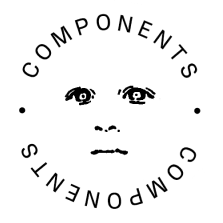A great deal has been written about Robert Smithson and the way he changed the way we look at photography. But in a sense his work has hardly changed, if at all. In the late ’60s and early ’70s, Smithson’s Conceptual stance was the same as that of the photographers on whom he most resembles: abstraction as a pragmatic procedure, reductive documentary data as a process of elimination, the photograph as a conceptually arbitrary product of the artist’s mental construction. The important difference, though, is that Smithson was able to pursue his Conceptual agenda in a manner that allowed him to work across media more easily, and over longer periods than other artists of his generation. Smithson achieved this distinction by deliberately operating within an increasingly defined framework of modes not traditionally associated with art: sculpture, photography, video, and assemblage. Smithson’s work of the ’70s and ’80s is a case in point. Almost everyone—myself included—considers art photography and sculpture, but of course most of us rarely consider the processes by which these works become images. We all know that certain of Smithson’s ideas about photography have been validated by other artists; most of us have never had direct contact with the work. Perhaps this is because, as any artist, Smithson has experienced photography in a number of different ways. In the immediate world, his sculpture and photography occupy the second tier of the New York art scene, behind Renderings and Paintings, which are seen most often in “high” art (this is where you find Mike Kelley, Randall S. Pitney, et al.). But perhaps Smithson’s work has had a greater impact on contemporary art because his ideas about photography have not been so conceptualized. Smithson’s work has always involved an engagement with the world of objects. In the ’60s, this was stereoscopy, the camera’s eye oriented to the ground at all times, with no center (except when the camera was attached to a crane), no scale, no distance. Smithson’s stereoscopy—the first step in his systematic shift to the medium—concluded the introduction of perspective into his conceptual schema, establishing a scale of perception that is as important to the structure of Smithson’s work as the object itself.
Generated from the "Artforum, June 1, 1962 - January 3, 2020" dataset, used in the article "Affect as a Service."
Options
- Return to the generator
- Copy link to clipboard
